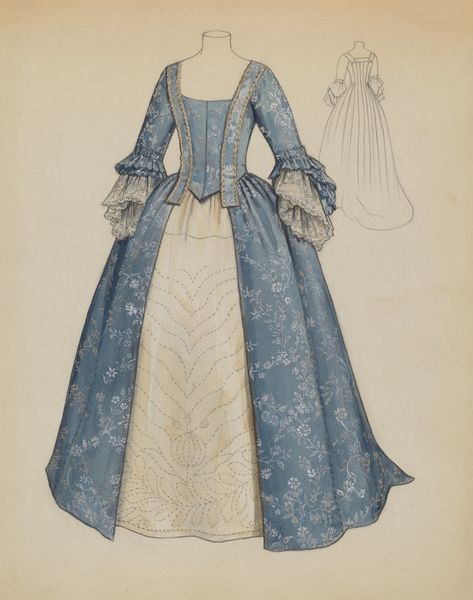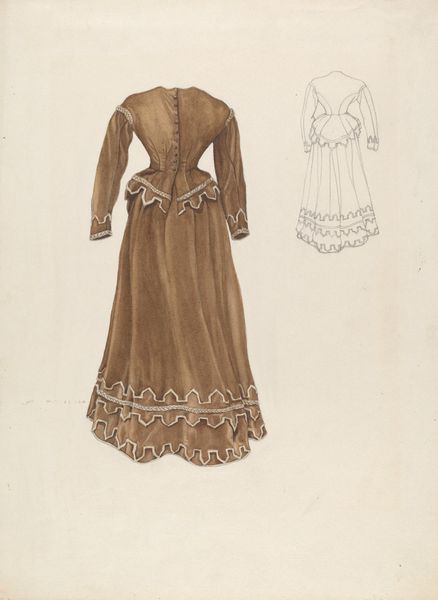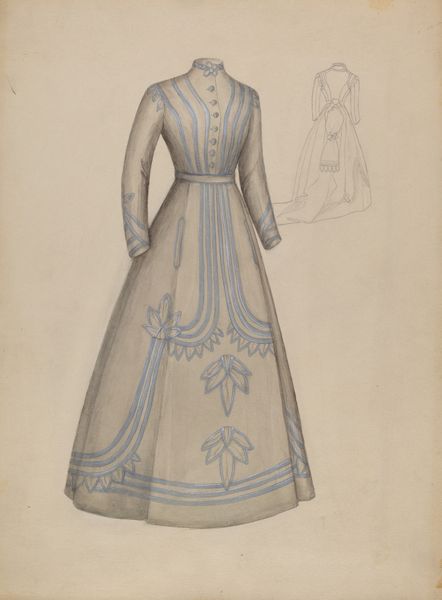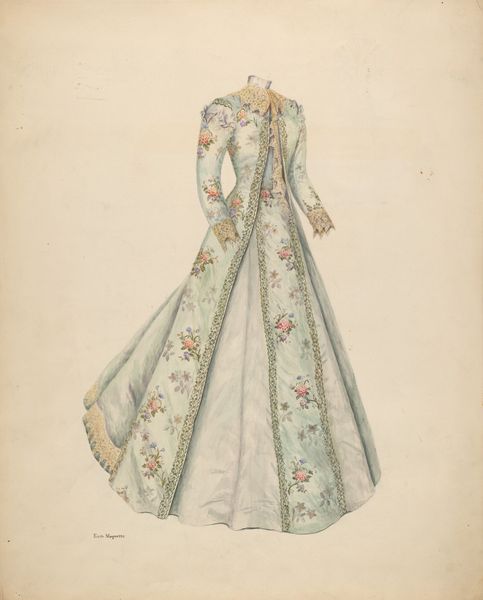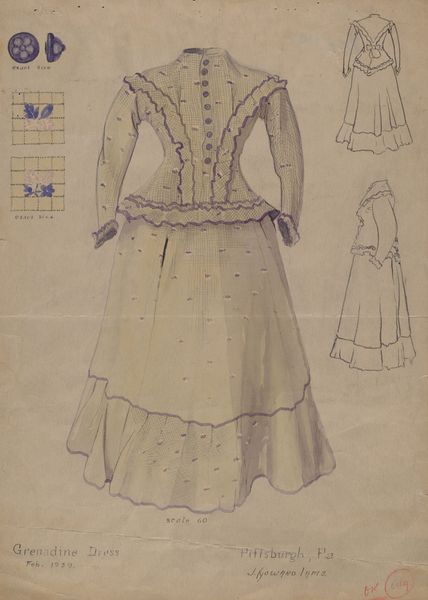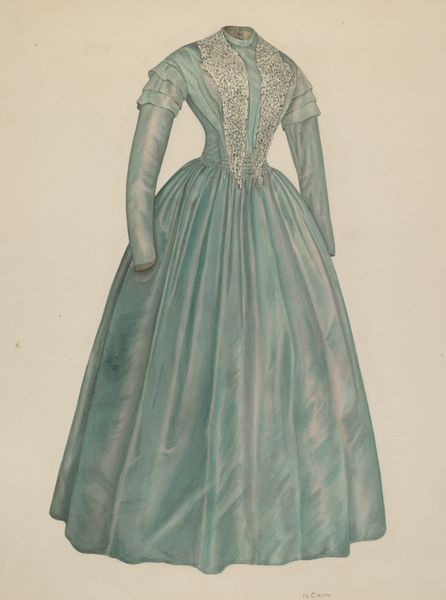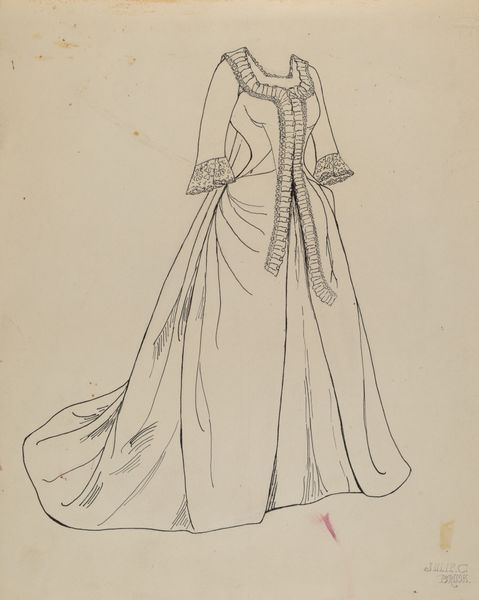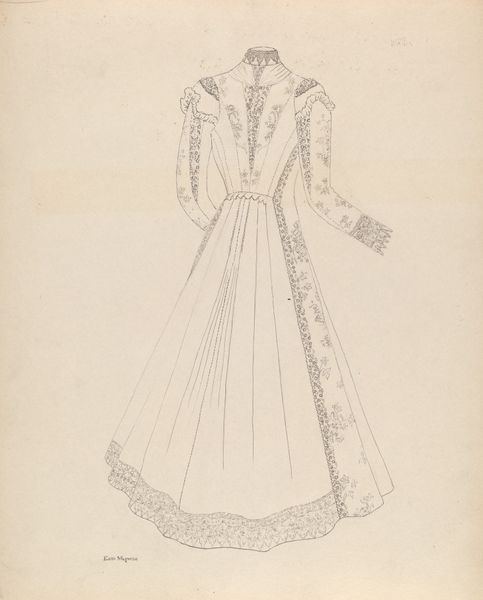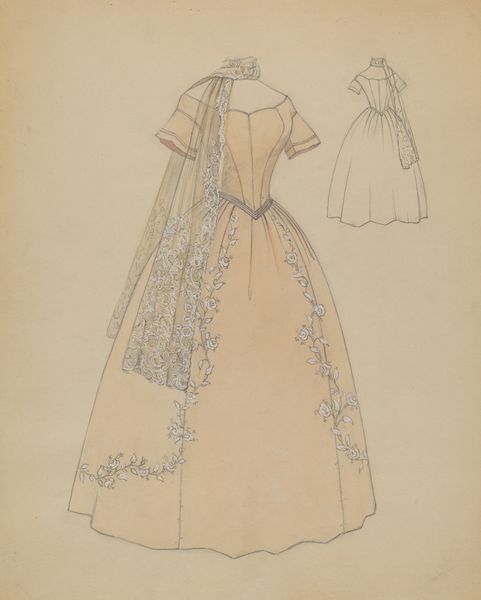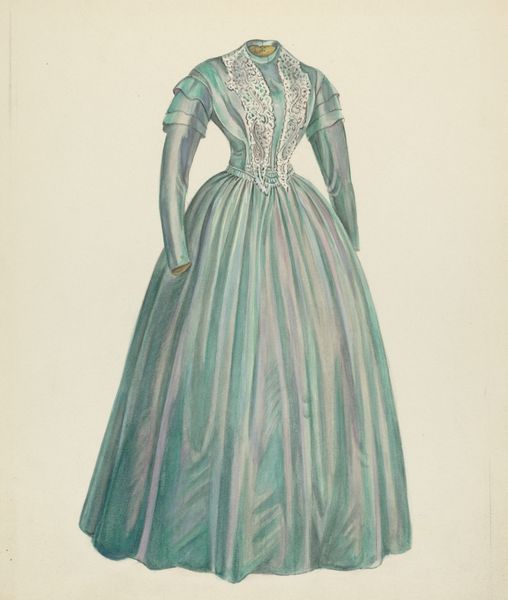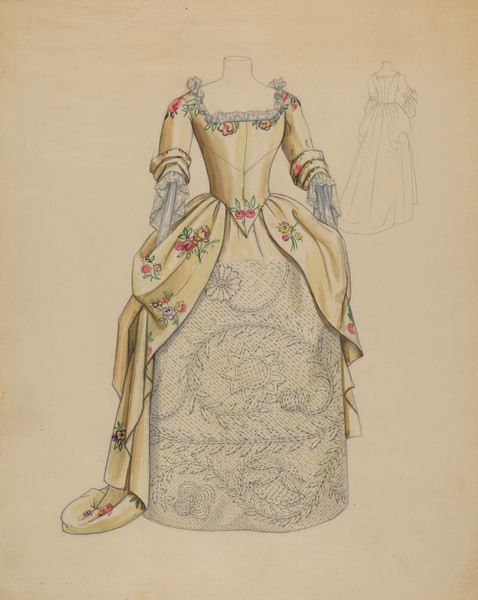
drawing, watercolor
#
portrait
#
drawing
#
pencil sketch
#
watercolor
#
watercolour illustration
#
academic-art
#
fashion sketch
Dimensions: overall: 29 x 22.9 cm (11 7/16 x 9 in.)
Copyright: National Gallery of Art: CC0 1.0
Curator: At first glance, the piece presents such a restrained palette, all cool blues and soft whites. It projects a sense of serenity. Editor: We are looking at a piece titled "Dress" by Arthur Sander, likely crafted between 1935 and 1942. It's rendered through watercolor and what appears to be pencil sketch, combining mediums to depict more than just the object itself. Curator: You say more than just the object; how so? To me, the color choices communicate purity and grace. It reminds me of depictions of nobility and their costumes. Editor: That’s insightful. The dress itself, with its flowing lines and delicate lace, certainly evokes elegance, doesn't it? However, the artistic intention also appears to be to hint at a ghost-like human figure wearing this garment. The lace, as we know it, is of course a symbol of feminine elegance, and nobility during certain historical moments but what's also relevant is that lace, historically, was meant to communicate power in European courts. So, the dress seems less about an idealization of feminine elegance than a power play. Curator: It's interesting that you point out the suggestion of the wearer, rather than just appreciating it as a formal fashion sketch, especially since so many such designs circulated and directly influenced commercial trends. Knowing Sander's background as a portrait artist of German society, what statement do you believe this design might have made at this historical moment, through visual signifiers that point to tradition but ultimately offer only a trace of the wearer? Editor: I suspect it offers a pointed commentary on shifting identities, the loss of the individual, or perhaps more bluntly, the end of this kind of courtly authority. Even the ghost-like suggestion of the human wearing the dress reminds us of that presence/absence, especially knowing these portraits are being created on the cusp of enormous sociopolitical upheaval. Curator: I see your perspective now. What began as a piece suggestive of serene beauty opens into something far more reflective of turbulent times and what was being left behind. Editor: Exactly, and the dress then becomes a vessel freighted with complicated symbols, a material archive speaking volumes, beyond beauty and commerce, about those fading societal figures.
Comments
No comments
Be the first to comment and join the conversation on the ultimate creative platform.
